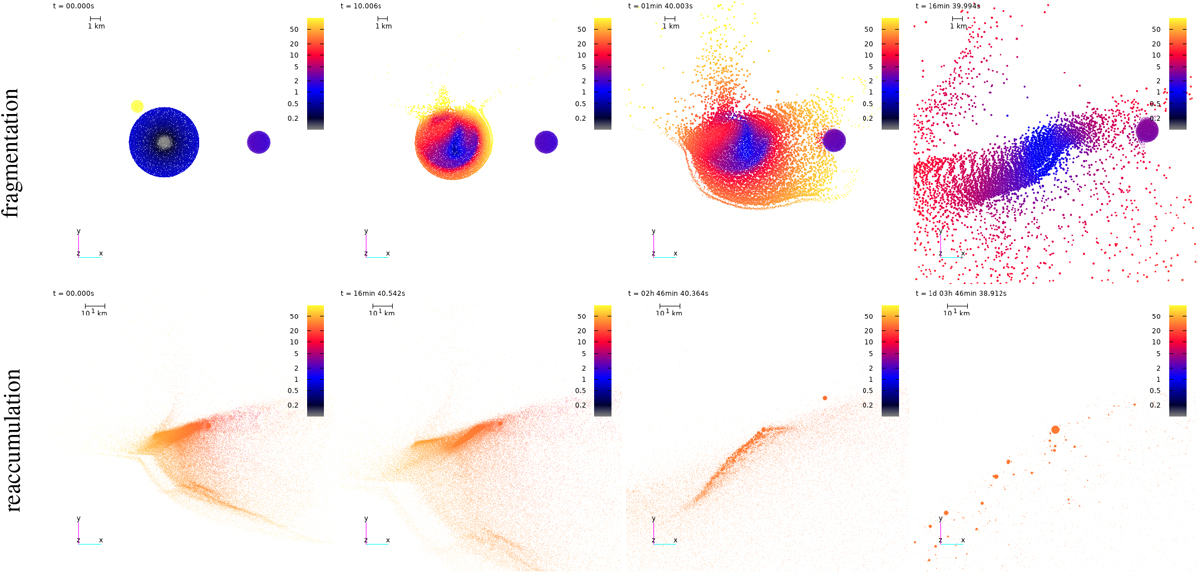Fig. 9

Download original image
Same as Fig. 8, but now for a binary parent object. The basic parameters were a primary size D1 = Dtar = 7.5 km, a secondary size D2 = 2.5 km, an impactor size Dimp = 1.4 km, an impact angle ϕ = 60°, an impact velocity v = 5 km s−1, and a separation r = 10 km. Individual panels can be described as follows: (a) the initial conditions with the binary architecture, (b) because of the near-to-grazing geometry of the impact, high-speed ejecta emanate from the impact site and surrounding surface zone, (c) ejecta reaching the secondary component in the binary, (d) the primary is preserved as the largest remnant in the family, (e) handoff phase with the preserved secondary component of the binary, (f) onset of reaccumulation of other fragments, (g) the secondary escaping from the system, (h) the reaccumulated primary (the secondary off-scale, not shown), which together form a distant pair, accompanied by smaller fragments. (Animation is available online and at https://sirrah.troja.mff.cuni.cz/~mira/hobson/hobson.html)
Current usage metrics show cumulative count of Article Views (full-text article views including HTML views, PDF and ePub downloads, according to the available data) and Abstracts Views on Vision4Press platform.
Data correspond to usage on the plateform after 2015. The current usage metrics is available 48-96 hours after online publication and is updated daily on week days.
Initial download of the metrics may take a while.


